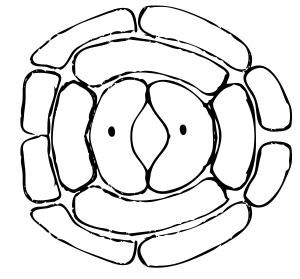Ostomy, Stoma and Skin Integrity
The terms ostomy and stoma are often used interchangeably, but for the purpose of this article I will use the preferred American term, ‘ostomy’ (‘stoma’ is more typically used in the UK).
Leakage and the resulting contact with bodily waste is a frequent problem with ostomies. Irritation and lesions may also result from frequent changes of ostomy products such as tapes and seals. Ostomy creams and wipes are designed to protect the skin around the stoma from friction and leakage of bodily fluids and exudate. Barrier creams are designed to address the skincare complications that can occur with an ostomy, while barrier wipes are designed for more precision application, in a handy size for carrying around.
Applying and Using Barrier Creams
Barrier creams are commonly applied to the area where the ostomy is situated to deal with leakage from the stoma. However, if complications from wound leakage occur in other areas of the body, barrier creams may be beneficial to use in those regions as well. For instance, if your ostomy involves the diversion of your large intestine from your rectum to an ostomy elsewhere, you may nonetheless suffer soreness in your anal area from leakage from your anal wound. Barrier creams can be applied to your anal wound to ease soreness while the wound heals.
A good quality barrier cream will be non-greasy and neither too thick nor runny. As a result, the barrier cream should not have a detrimental impact on the adhesion of your flange to your skin, wound dressings or devices. The barrier cream should also not decrease the effectiveness of incontinence pads.
Barrier creams are applied to the area of the skin where the flange is located. Before applying barrier cream, thoroughly clean the area to remove adhesive residue along with any trace of urine or fecal matter. Thoroughly dry the skin and then apply barrier cream until there is no visible trace of the product. You may reapply barrier cream as needed, for instance, if you experience pouch leakage.
Applying and Using Barrier Wipes
If you have sensitive skin that is vulnerable to reduced skin integrity, barrier wipes may help your ostomy maintenance routine. Barrier wipes are a liquid film that is delivered to the skin in a wipe-based medium. The wipe leaves a microscopic film layer that protects your skin against the adverse effects of leakage and reactions from adhesive products. Barrier wipes should be alcohol free, to avoid burning and irritation from being applied to skin that is already sore. Barrier wipes often come in sterile options to avoid interference with wounds that may be healing in the area of application.
As with barrier creams, barrier wipes should only be applied to skin that is thoroughly clean and dry. Apply the barrier wipe over the appropriate area and allow the substance to dry. Apply a second coat after the first coat has dried completely. If you must apply barrier wipes to an area where two skin surfaces meet, apply the barrier wipe to each section separately, and allow the wipe to dry between applications. You may reapply barrier wipes after episodes of pouch leakage as necessary.
Doris Leveson is an ostomate and mom of four. In her free time, she enjoys sharing her insights with others on the web.
[toggle title=”Featured images”]
[/toggle]


Leave a Reply